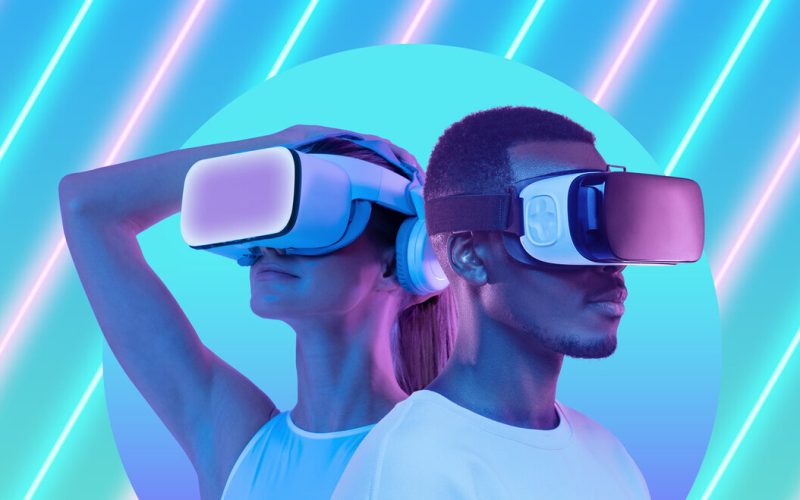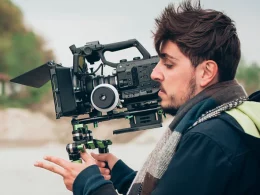Introduction
Virtual reality (VR) is making big changes in many areas, like gaming, healthcare, and education. One of the most exciting changes is how VR is transforming the movie industry. With VR, filmmakers can create new ways for audiences to enjoy movies, making the experience more interactive and immersive. In this article, we will explore how VR is changing the movie industry and what it means for both filmmakers and viewers.
What Is Virtual Reality in Filmmaking?
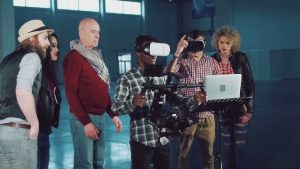
In traditional movies, we watch the action unfold on a flat screen. But with Virtual Reality Movie Industry, the audience feels like they are inside the movie, as if they are part of the action. VR lets filmmakers create movies that are 360 degrees, allowing viewers to look around in all directions. This makes the experience more exciting and real.
1. A New Way to Tell Stories
Virtual reality is changing how stories are told. Instead of just watching a character’s journey, viewers can now feel like they are part of it. For example, in a Virtual Reality Movie Industry, you can look around, interact with the environment, and even make choices that affect the story. This gives viewers more control over how the story unfolds.
2. New Filmmaking Techniques
Filmmakers now have to think differently when using VR. In traditional filmmaking, directors focus on what the camera sees. But in VR, the camera captures everything around the viewer. This means that directors have to think about the 360-degree world and how to keep viewers interested in every direction they look.
How VR is Changing the Way Viewers Experience Movies
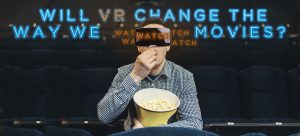
Virtual reality is not only changing how movies are made but also how audiences experience them. With VR, viewers no longer just watch a movie; they are inside it, feeling like they are part of the action. This makes the experience much more intense and exciting.
1. Full Immersion in the Story
In traditional films, viewers watch the story unfold on a screen. But with VR, the audience is surrounded by the movie world. Imagine being in a spaceship traveling to another planet or exploring a jungle filled with dinosaurs. VR makes it feel like you are really there, which makes the story more emotional and memorable.
2. Interactivity in VR Movies
VR also allows viewers to interact with the story. In some VR movies, viewers can make decisions that affect how the story moves forward. This means that instead of just sitting back and watching, you can actively participate in the film. For example, in VR experiences like The Walking Dead: Saints & Sinners, viewers can fight zombies and interact with the environment.
Examples of VR in the Movie Industry
Some movies have already used VR to create unique experiences for audiences. These VR projects show how the movie industry is experimenting with this new technology.
1. The Lion King VR Experience

In 2019, the movie The Lion King launched a VR experience where viewers could explore the African savanna and see the world of the film up close. This gave fans a chance to experience the movie in a completely new way, making the story even more memorable.
2. The VOID VR Experience
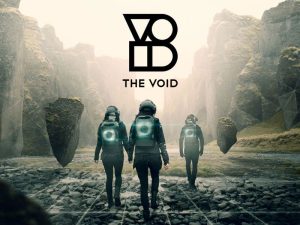
The VOID is a special VR experience that lets participants walk through an immersive world filled with action. While not exactly a traditional movie, it shows how VR can be used to bring stories to life. In The VOID, viewers can interact with characters and explore environments as though they are in the film.
3. Jurassic Park VR Experience

Universal Studios created a VR experience based on Jurassic Park, where visitors could walk through a jungle filled with dinosaurs. This was a great example of how VR can make audiences feel like they are inside a movie world, with physical elements like moving floors adding to the experience.
How Virtual Reality Enhances Storytelling

Virtual reality gives filmmakers a new way to tell stories. Unlike traditional films, where you only watch from one angle, VR allows you to look around and explore the environment. This gives you a chance to see more details, creating a deeper connection with the story. For example, in a VR movie set in space, you could look out the window of a spaceship and see stars and planets as if you were really there. It makes the story feel more real and engaging.
The Impact of Virtual Reality on Viewers
With VR, viewers can do more than just watch a movie. They can interact with it, making the experience much more personal. Imagine watching a detective story where you can choose which clues to follow or even decide who the suspect is. This level of involvement makes the viewer feel like they are part of the story, which can make the experience more exciting and memorable.
VR and the Future of Movie Theaters

Movie theaters could also change because of virtual reality. Instead of just sitting in front of a screen, theaters could offer VR experiences that let you step into the movie world. This would create a whole new type of movie-going experience, where you could walk around and interact with the film. It could be a fun and exciting way to enjoy movies with friends or family, making theaters more immersive and different from home viewing.
VR’s Role in Education and Documentaries
Virtual reality can also make documentaries and educational films more interesting. With VR, you can experience real historical events or visit places you would not normally be able to go. For instance, in a documentary about ancient Egypt, you could “walk” through the pyramids or see how the ancient civilization lived. This makes learning feel more like an adventure, keeping the viewer engaged and excited to learn more.
Collaboration Between Technology and Creativity

For VR to work in movies, technology and creativity need to come together. Filmmakers must learn how to use new tools and software to create 360-degree movies, while also coming up with unique ways to tell a story. This teamwork between tech experts and storytellers opens up endless possibilities for new types of films. It allows filmmakers to break the rules of traditional filmmaking and create truly groundbreaking experiences.
The Growing Popularity of VR Experiences
As more people try virtual reality, the popularity of Virtual Reality Movie Industry is likely to grow. VR headsets are becoming more affordable, which means more people will be able to experience VR films at home. In addition, VR movie experiences are showing up at theme parks, museums, and festivals, making it easier for audiences to experience this new technology. As VR continues to improve and become more widespread, it will become an important part of how we watch and enjoy movies.
VR and the Experience of Action Movies
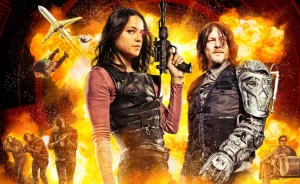
Action movies can benefit greatly from virtual reality. Instead of just watching characters fight or run away from danger, VR lets viewers feel like they are in the middle of the action. Imagine being in a high-speed car chase or escaping from a burning building. VR can make those moments much more thrilling because you’re experiencing them firsthand, making the movie feel much more exciting and real.
VR in Horror Movies: A New Level of Fear
Horror movies are another genre that can be made more intense with virtual reality. With VR, the viewer feels like they are trapped in a scary situation, surrounded by creepy sounds and sights. It makes the horror feel closer and more personal, which can be both terrifying and exciting. A haunted house or a monster chasing you through the woods feels much scarier when you feel like you’re really there.
Virtual Reality as a Marketing Tool
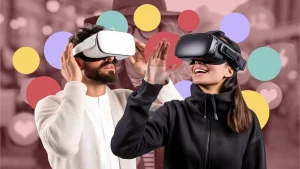
Filmmakers are also using virtual reality as a marketing tool. By creating VR trailers or sneak peeks, they can offer fans a chance to experience a taste of the movie before it comes out. For example, before the release of a big movie, fans could take part in a Virtual Reality Movie Industry experience where they explore the movie’s world. This kind of marketing creates excitement and builds a connection between the audience and the movie, making them more likely to watch the full film when it’s released.
The Challenges of Virtual Reality in Filmmaking
While VR has a lot of potential, there are also challenges that filmmakers have to face.
1. High Costs of Production
Making a VR movie is expensive. It requires special equipment like 360-degree cameras, VR headsets, and editing tools. This makes the production process more costly than traditional filmmaking. For many filmmakers, the high cost is a big barrier to creating VR movies.
2. Motion Sickness and Comfort Issues
Another challenge is that VR can make some viewers feel sick. This happens when the movement in the VR movie doesn’t match what the viewer’s body is feeling. To make VR movies enjoyable for everyone, filmmakers have to work hard to avoid causing discomfort.
The Future of Virtual Reality in Movies
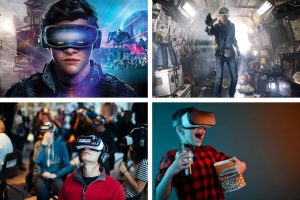
The future of VR in movies looks bright. As technology continues to improve, VR experiences will become even more realistic and accessible. Filmmakers will have more tools to create amazing stories that fully immerse audiences. Over time, VR could become a standard part of filmmaking, changing how movies are made and enjoyed. The possibilities for the future of VR in movies are endless, and it will likely play an even bigger role in entertainment as time goes on.
Comparing VR and Traditional Filmmaking
Let’s take a look at how virtual reality compares to traditional filmmaking in a simple table:
| Feature | Virtual Reality Movies | Traditional Movies |
|---|---|---|
| Experience | Fully immersive, 360-degree | Passive viewing, flat screen |
| Audience Control | High, viewers can interact | Low, viewers just watch |
| Cost | Expensive (special equipment) | Less expensive |
| Technology | Requires VR headsets, 360-degree cameras | Standard cameras and editing tools |
| Storytelling | Interactive, multiple perspectives | Linear, one-way story |
| Accessibility | Requires VR gear | Can be watched on TV, in cinemas, or online |
Conclusion
Virtual reality is transforming the movie industry in exciting ways. It allows filmmakers to tell stories that make the audience feel like they are part of the action. Virtual Reality Movie Industry also makes the experience more interactive, giving viewers a chance to influence the story. However, the high production costs and motion sickness issues are still challenges to overcome. Despite this, VR is shaping the future of movies, offering a new, thrilling way for people to experience films.






